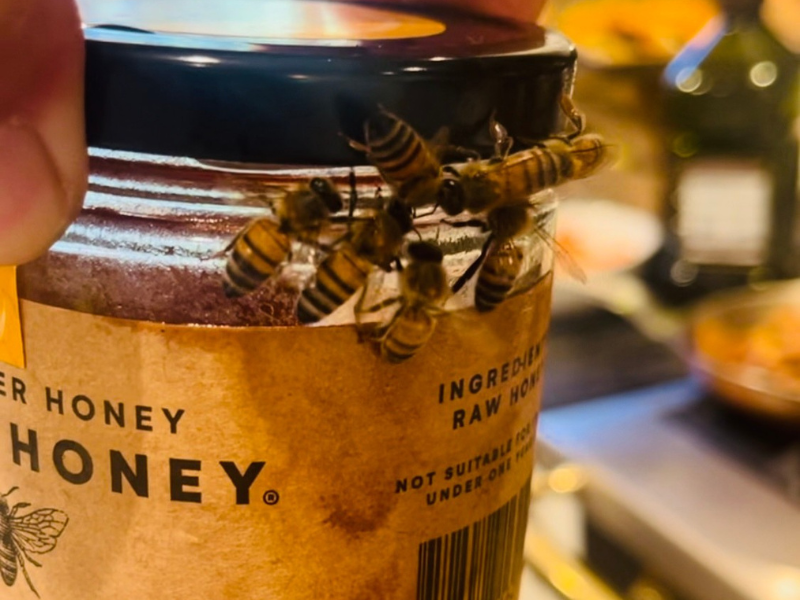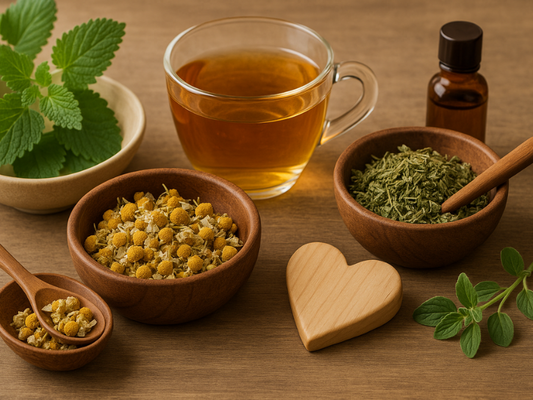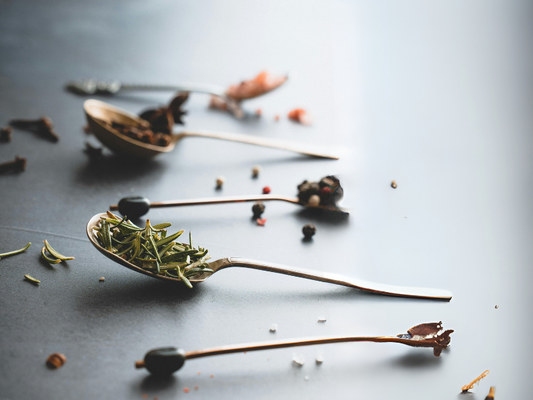
The Healing Power of Honey
Nature's Sweet Remedy in Modern Medicine
For centuries, honey has been cherished not only as a natural sweetener but also for its medicinal properties. Today, this golden elixir is making a significant comeback in modern medicine, particularly in surgical and post-operative care. New mothers, who often face surgical procedures like cesarean sections, can benefit from honey's remarkable healing attributes.
Did you know that honey's application in wound healing dates back to ancient civilizations? The Egyptians, for instance, utilized honey to treat wounds and burns, capitalizing on its natural antibacterial properties. Fast forward to today, and medical professionals are rediscovering honey's potential, integrating it into treatments to prevent infections and accelerate recovery. At MotherBees, we recognize the challenges new moms encounter during recovery and are committed to providing natural and effective solutions.
The healing power of honey isn’t just folklore—it’s backed by science. Modern research continues to validate what ancient healers already knew: honey is a potent remedy that aids tissue repair, fights infections, and soothes inflammation. Whether used in hospitals or as part of home care, honey has proven to be an invaluable tool in post-surgical recovery. Understanding its full potential can help new moms and anyone undergoing surgery make informed decisions about their healing process.
From Ancient Medicine to Modern Science: Honey’s Role in Healing
Honey’s medicinal use isn’t a novel concept. Ancient texts from various cultures highlight its application in treating wounds and ailments. The resurgence of interest in honey’s therapeutic properties is backed by scientific research. Studies have demonstrated honey’s efficacy in promoting wound healing, reducing inflammation, and serving as a potent antibacterial agent. For example, a comprehensive review in the Journal of Functional Biomaterials discusses honey’s role in advanced wound care, emphasizing its ability to enhance tissue regeneration and provide a protective barrier against infections.
What’s fascinating about this study is that it highlights how honey interacts with the skin and underlying tissues to stimulate new cell growth. Unlike conventional antiseptics, which may dry out wounds or kill healthy cells alongside bacteria, honey creates an optimal healing environment. As a natural humectant, it retains moisture, keeping wounds from scabbing too soon while ensuring a gradual and effective recovery. This means fewer scars, less irritation, and faster overall healing—something every new mom can appreciate.
Honey has been used in surgeries and wound care for centuries due to its natural healing properties. Here’s how it helps:
1. Antibacterial Properties – Honey contains hydrogen peroxide and other antimicrobial compounds that help prevent infections in surgical wounds.
2. Promotes Healing – It creates a moist healing environment, which accelerates tissue regeneration and reduces scarring.
3. Reduces Inflammation – Honey has anti-inflammatory properties that help minimize swelling, redness, and pain after surgery.
4. Draws Out Infection – Its high sugar content and osmotic effect pull out excess fluid and bacteria from the wound, promoting faster healing.
5. Encourages Tissue Growth – Honey stimulates fibroblast and epithelial cell growth, aiding in wound closure.
6. Minimizes Scarring – By keeping wounds hydrated and protected, honey can reduce the formation of thick scars.
7. Works Against Antibiotic-Resistant Bacteria – Medical-grade honey, such as Manuka honey, is effective against resistant bacteria like MRSA (Methicillin-resistant Staphylococcus aureus).
Modern medicine continues to explore honey-based dressings for post-surgical care, especially for chronic wounds, burns, and ulcers. In many parts of the world, honey’s medicinal properties are widely recognized and utilized. Honey products are commonly found in most pharmacies across Brazil, Mexico, Greece, and various regions of Asia, where they are used to treat everything from minor cuts and sore throats to skin conditions and digestive issues. This global embrace of honey as a therapeutic remedy highlights its enduring value, not only as a natural sweetener but also as a time-honored healing agent backed by both traditional wisdom and modern science.
How Honey Fights Infections and Reduces Inflammation

The secret behind honey’s healing prowess lies in its unique composition. It possesses low water activity, which inhibits bacterial growth, and contains glucose oxidase, an enzyme that produces hydrogen peroxide—a mild antiseptic. Additionally, honey’s acidic pH creates an unfavorable environment for pathogens. These combined factors make honey a formidable opponent against infections. Research published in The Scientific World Journal highlights honey’s antibacterial properties and its effectiveness in treating wounds, ulcers, and burns.
Beyond its antibacterial capabilities, honey exhibits anti-inflammatory properties. It reduces swelling and pain by modulating the body’s immune response, thereby accelerating the healing process. This dual action of combating infection and reducing inflammation positions honey as a valuable asset in wound management.
A crucial factor in honey’s anti-inflammatory effects is its ability to neutralize free radicals. Studies suggest that honey, particularly darker varieties like raw sage honey, contains a high concentration of antioxidants, which protect cells from oxidative stress. This is especially beneficial for post-surgical wounds, where inflammation can slow down the healing process. By reducing oxidative damage, honey helps minimize swelling and promote tissue regeneration.
Why Hospitals Use Honey for Wound Care
The medical community has begun to embrace honey, particularly in the form of medical-grade products, for wound care. Hospitals are incorporating honey-based dressings to treat various wounds, including surgical incisions, burns, and ulcers. A notable example is the use of Manuka honey, derived from the Manuka tree in New Zealand, which has been recognized for its superior antibacterial properties. A study highlighted by UCLA Health emphasizes that medical-grade honey forms a protective barrier, keeps wounds moist, and nourishes injured tissues, thereby promoting healing.
Manuka honey is particularly effective because it contains methylglyoxal (MGO), a compound with powerful antibacterial properties that go beyond those found in regular honey. This makes it highly beneficial for preventing infections in deep wounds or post-surgical sites. Additionally, Manuka honey helps in reducing antibiotic resistance, offering a natural alternative to traditional wound treatments. For those interested in experiencing its benefits, our Monofloral Manuka Honey is sourced from the pristine forests of New Zealand, ensuring it retains all its natural properties.

Honeycomb has several healing properties, and its different parts—wax, propolis, and residual honey—have been traditionally used for various medicinal benefits:
Beeswax (Structure of the Honeycomb)
Wound Healing & Skin Protection – Beeswax acts as a natural barrier, locking in moisture and protecting wounds from external contaminants.
Anti-Inflammatory – Used in salves and balms to soothe skin conditions like eczema, psoriasis, and minor burns.
Respiratory Relief – When chewed, beeswax helps clear sinuses and soothe sore throats.
Propolis (Bee Glue)
Antimicrobial & Immune Support – Propolis is rich in flavonoids and has natural antibacterial, antifungal, and antiviral properties.
Wound Healing – Applied to cuts, burns, and sores, propolis speeds up tissue regeneration.
Oral Health – Used in tinctures or mouthwashes, it helps with gum infections, sore throats, and dental cavities.
Residual Honey in the Comb
Healing Wounds – Honey inside the comb retains its raw enzymes, which help fight infections and promote healing.
Gut Health – Consuming honeycomb supports digestion and relieves acid reflux due to its soothing, prebiotic effects.
Allergy Relief – Eating local honeycomb may help build tolerance to pollen allergies.
Royal Jelly (Sometimes Found in Small Amounts)
Hormonal Balance – Supports fertility, reduces menopausal symptoms, and enhances skin rejuvenation.
Cognitive Support – Has neuroprotective effects, improving memory and reducing inflammation in the brain.
Chewing Honeycomb for Oral & Respiratory Health
Sinus & Allergy Relief – Helps clear congestion and acts as a natural expectorant.
Gum & Tooth Health – The antibacterial properties protect against cavities and strengthen gums.
Honeycomb is a powerhouse of natural medicine, used internally and externally to promote healing, protect the body, and support overall well-being.
Post-Op Recovery: Using Honey to Heal Faster and Reduce Pain
Post-operative recovery can be challenging, with risks of infections and prolonged healing times. Integrating honey into recovery protocols has shown promising results. Its application can lead to faster healing, reduced pain, and minimized scarring. A study from Virginia Commonwealth University discusses the development of a product using Manuka honey to promote healing of chronic wounds, underscoring honey’s potential in medical applications.
Another advantage of using honey post-surgery is its soothing effect. The natural sugars in honey provide an energy boost to the recovering body while also offering mild pain relief. By forming a natural barrier over wounds, honey prevents irritation from external factors, such as clothing or friction, reducing discomfort as wounds heal.
For topical applications aimed at nourishing and hydrating the skin, our Herbal Infused Raw Honey Mask is an excellent choice. It deeply nourishes and hydrates the skin while cleansing and unclogging pores, making it perfect for scar healing and skin repair.
Embracing Nature’s Healer

Honey’s resurgence in modern medicine underscores its timeless therapeutic value. For new mothers navigating the recovery journey, incorporating honey can offer natural support in healing and well-being. At MotherBees, we champion these natural remedies, providing resources and products that align with holistic health practices.
Healing isn’t just about treating the body—it’s about nurturing the mind and soul as well. The journey of recovery is an opportunity to slow down, listen to your body, and nourish yourself with nature’s wisdom. Whether it’s a warm spoonful of honey, a gentle herbal mask, or a soothing cup of tea, every small step in self-care is a step toward restoration.
Explore our range of honey-infused products, such as the Honey Cookies, a delightful treat combining the delicate sweetness of acacia honey with the comforting texture of shortbread. Let nature’s sweetness aid your journey to recovery—one soothing, healing drop at a time.











